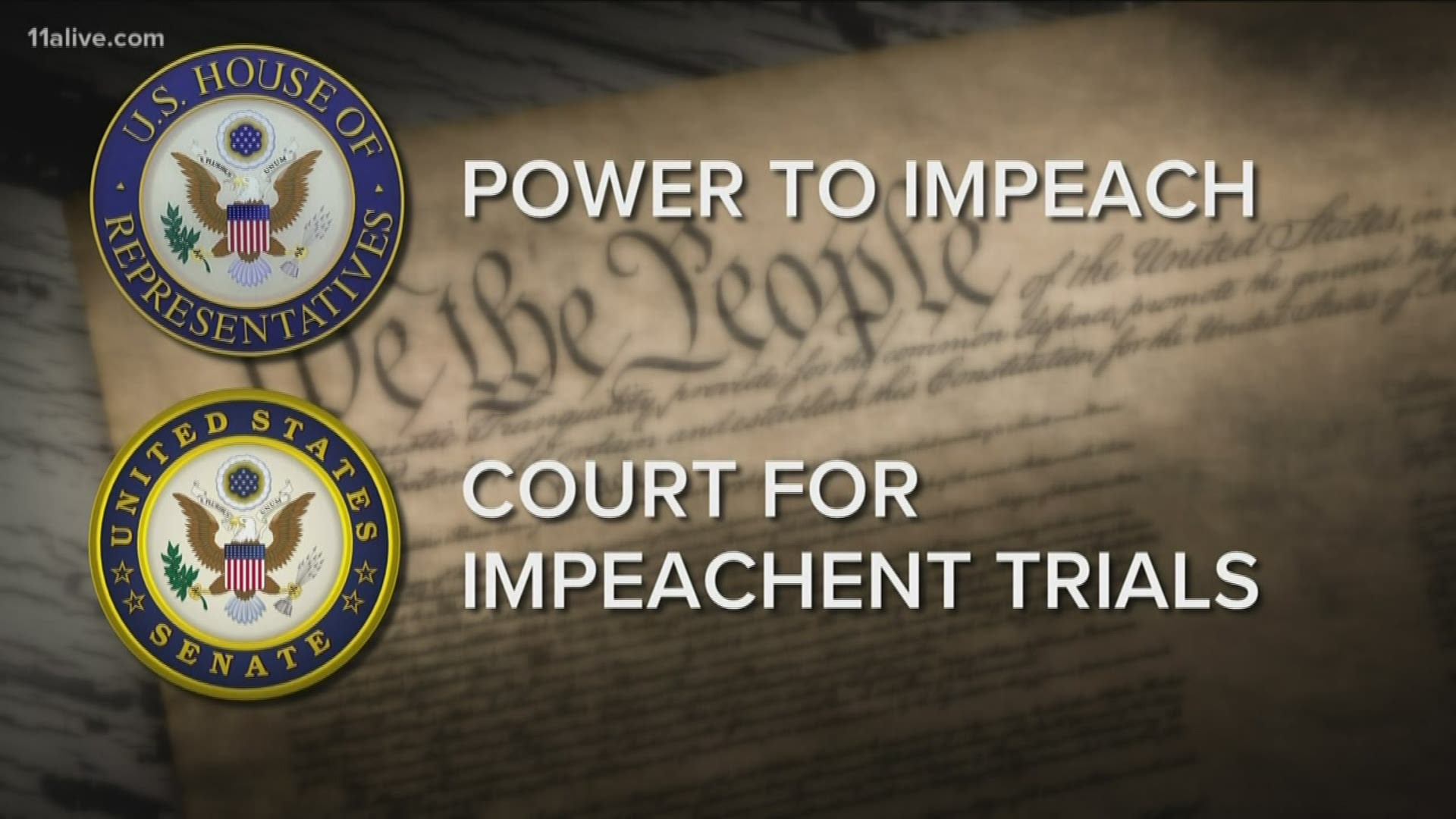WASHINGTON — House Speaker Nancy Pelosi announced Tuesday an impeachment inquiry into President Donald Trump.
An inquiry is a preliminary, formal step. It begins a fact-finding process into alleged allegations. If the lengthy process were to continue, the steps would follow as:
- Member of the House begins the process
- A member of the House of Representatives must first recommend impeachment proceedings to begin.
- Committee reviews allegations
- A House committee then reviews the allegations associated with the calls for impeachment.
- Articles of impeachment drafted
- Members of the committee draft articles of impeachment, essentially, charges of high crimes or misdemeanors against the president.
- House of Representatives votes
- A majority of the House of Representatives must then vote for impeachment, sending the matter to a trial in the U.S. Senate.
- Senate Trial
- The president is then tried by the Senate. Two thirds of senators must vote for conviction, and if he is convicted, the president can be removed from office.
A U.S. president has never been removed from office at the end of an impeachment process. While Presidents Richard Nixon and Bill Clinton were both impeached, Nixon resigned, and the Senate could not muster enough votes to convict Clinton.
Here is a key view things to understand about impeachment:
- The House of Representatives shall have the sole Power of Impeachment.
- The Senate shall have the sole Power to try all Impeachments cases. When the President of the United States is tried, the Chief Justice shall preside: and no Person shall be convicted without Concurrence of two-thirds of the Members present.
- Judgment in Cases of Impeachment shall not extend further than to removal from Office, and disqualification to hold and enjoy any Office of honor, Trust or Profit under the United States: but the Party convicted shall nevertheless be liable and subject to Indictment, Trial, Judgment and Punishment according to Law.
- A president cannot be pardoned for an impeachment.

